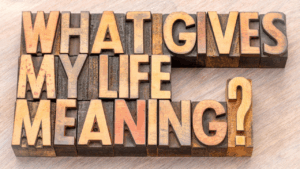
Play Text-to-Speech:
In an age dominated by rapid information exchange, developing critical thinking skills has become more essential than ever. Gregory Bassham and his co-authors, in Critical Thinking: A Student’s Introduction, present a detailed guide to mastering the art of reasoning, analysis, and decision-making. The book provides a framework for identifying fallacies, evaluating arguments, and making reasoned judgments, equipping readers with the tools to navigate the complexities of modern life.
This article explores the central ideas, practical applications, and broader implications of Critical Thinking: A Student’s Introduction, offering a deep dive into its principles and relevance in today’s world.
1. Understanding Critical Thinking
1.1 What Is Critical Thinking?
Bassham et al. define critical thinking as the disciplined process of actively and skillfully conceptualizing, analyzing, synthesizing, and evaluating information to reach reasoned conclusions. Far from being about cynicism or negativity, critical thinking is an approach to understanding and solving problems with clarity, precision, and open-mindedness.
1.2 The Goals of Critical Thinking
The authors outline several core objectives of critical thinking:
- Improving decision-making by evaluating options logically.
- Enhancing problem-solving through systematic analysis.
- Avoiding manipulation by recognizing biases and fallacies.
- Fostering intellectual independence by cultivating curiosity and skepticism.
These goals emphasize that critical thinking is not limited to academic pursuits but is integral to personal and professional success.
2. The Elements of Critical Thinking
2.1 Claims and Arguments
A central focus of the book is understanding the relationship between claims and arguments.
- Claims are statements that can be true or false.
- Arguments consist of premises (reasons) that support a conclusion.
The authors emphasize the importance of distinguishing between assertions (unsupported claims) and well-supported arguments, laying the groundwork for effective reasoning.
2.2 Evaluating Arguments
Bassham et al. provide a structured approach to evaluating arguments:
- Clarity: Are the terms and ideas clearly defined?
- Relevance: Do the premises directly support the conclusion?
- Sufficiency: Are there enough premises to justify the conclusion?
- Acceptability: Are the premises credible and reasonable?
2.3 The Role of Logic
The authors introduce key principles of logic, distinguishing between deductive and inductive reasoning:
- Deductive arguments aim to guarantee the truth of their conclusions if the premises are true.
- Inductive arguments offer probable support for their conclusions, relying on evidence and patterns.
By understanding these forms of reasoning, readers can better assess the strength of arguments and avoid logical errors.
3. Identifying Fallacies
A significant portion of the book is devoted to recognizing and avoiding common logical fallacies, which are errors in reasoning that undermine arguments. Below are a few examples:
3.1 Ad Hominem
Attacking the person making an argument rather than addressing the argument itself. For example, dismissing someone’s idea based on their political affiliation is an ad hominem fallacy.
3.2 Strawman
Misrepresenting an opponent’s argument to make it easier to attack. For instance, if someone advocates for environmental regulations, accusing them of wanting to destroy the economy is a strawman fallacy.
3.3 Appeal to Ignorance
Claiming something is true because it has not been proven false. For example, arguing that extraterrestrial life exists simply because we haven’t disproved it is an appeal to ignorance.
3.4 Slippery Slope
Suggesting that one action will inevitably lead to a chain of negative events without evidence. For example, claiming that legalizing one drug will automatically lead to the legalization of all drugs is a slippery slope argument.
By highlighting these and other fallacies, Bassham et al. empower readers to detect flawed reasoning in everyday discourse.
4. The Role of Evidence in Critical Thinking
4.1 Types of Evidence
The book explores the different forms of evidence used to support arguments:
- Empirical evidence, based on observation and experience.
- Statistical evidence, derived from numerical data.
- Testimonial evidence, relying on expert opinions.
4.2 Evaluating Evidence
Critical thinkers must assess the reliability, relevance, and sufficiency of evidence. Bassham et al. provide a checklist for evaluating sources:
- Is the source credible and unbiased?
- Is the evidence up-to-date and accurate?
- Does the evidence directly support the argument?
4.3 The Role of Confirmation Bias
The authors discuss how confirmation bias—the tendency to seek and interpret information that supports one’s existing beliefs—can distort reasoning. Recognizing and countering this bias is essential for objective analysis.
5. The Ethics of Critical Thinking
Bassham and his co-authors stress that critical thinking is not just a cognitive skill but also an ethical responsibility. Ethical critical thinking involves:
- Respecting differing viewpoints, even when disagreeing.
- Engaging in honest dialogue, avoiding manipulation or deceit.
- Seeking truth, rather than merely winning arguments.
The authors argue that fostering a culture of ethical critical thinking can improve public discourse and decision-making, benefiting society as a whole.
6. Critical Thinking in Practice
6.1 Academic Contexts
Critical thinking is foundational in education, enabling students to analyze texts, construct coherent arguments, and evaluate sources. The book provides strategies for:
- Reading critically, by identifying authors’ main points and biases.
- Writing persuasively, by structuring arguments logically and supporting them with evidence.
- Participating in discussions, by listening actively and engaging constructively.
6.2 Professional Contexts
In the workplace, critical thinking aids in decision-making, problem-solving, and innovation. For example:
- Managers use critical thinking to evaluate project proposals and assess risks.
- Scientists rely on critical thinking to design experiments and interpret results.
- Lawyers apply critical thinking to construct cases and anticipate counterarguments.
6.3 Personal Decision-Making
Critical thinking also enhances personal decision-making, from financial planning to ethical dilemmas. Bassham et al. encourage readers to apply critical thinking to everyday choices, considering long-term consequences and multiple perspectives.
7. Barriers to Critical Thinking
The authors identify several obstacles to critical thinking, including:
- Cognitive biases, such as confirmation bias or overconfidence.
- Emotional influences, like fear or anger, which can cloud judgment.
- Social pressures, including groupthink and peer pressure.
- Lack of knowledge, which limits the ability to analyze complex issues.
Overcoming these barriers requires self-awareness, education, and practice.
8. The Broader Implications of Critical Thinking
In a world where misinformation spreads rapidly, Bassham et al. argue that critical thinking is essential for informed citizenship. By cultivating critical thinking skills, individuals can:
- Distinguish credible sources from unreliable ones.
- Evaluate political claims and media reports critically.
- Advocate for evidence-based policies and decisions.
The authors also highlight the role of critical thinking in fostering empathy and understanding, as it encourages individuals to consider diverse perspectives and question stereotypes.
Conclusion
Critical Thinking: A Student’s Introduction by Gregory Bassham et al. is a comprehensive and accessible guide to mastering the art of reasoning and analysis. By providing practical tools for evaluating arguments, identifying fallacies, and assessing evidence, the book equips readers to navigate the complexities of modern life with clarity and confidence.
The emphasis on ethical reasoning and the broader implications of critical thinking underscores its relevance beyond academia, extending to professional, personal, and civic spheres. In a time of polarized opinions and information overload, the principles outlined in this book offer a path to thoughtful dialogue, informed decision-making, and intellectual growth.
Ultimately, Bassham et al. remind us that critical thinking is not just a skill but a mindset—one that fosters curiosity, resilience, and a lifelong pursuit of understanding. Whether in classrooms, boardrooms, or community forums, the ability to think critically empowers individuals to engage meaningfully with the world around them.

Maintenance, projects, and engineering professionals with more than 15 years experience working on power plants, oil and gas drilling, renewable energy, manufacturing, and chemical process plants industries.










